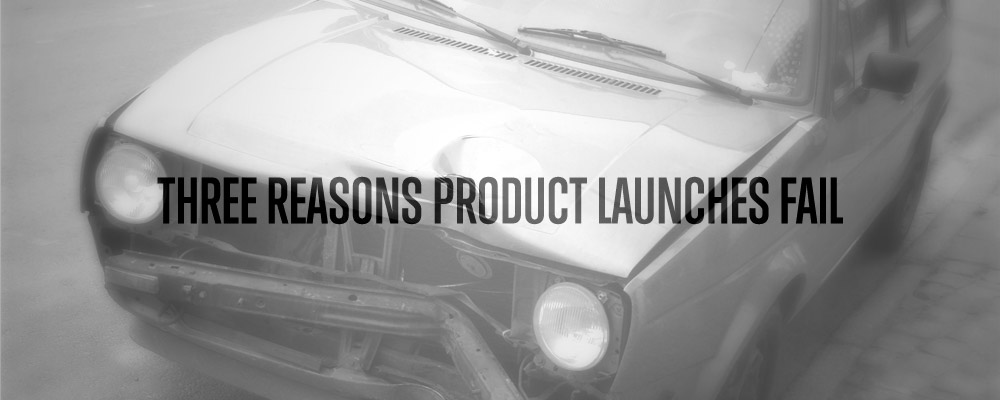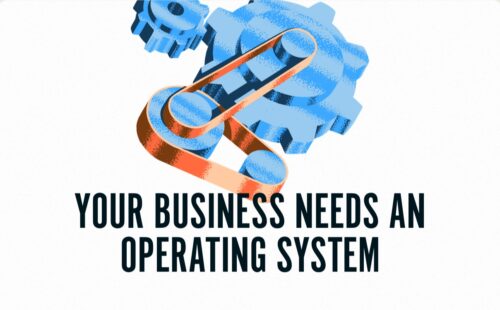Before every product launch I fear this one will be the product launch that fails. Before I figured out how to market and sell products I had plenty of failures, but once I started to perfect this system for launching, (almost) all of my launches have been a big success. That doesn’t stop the fear of failure.
Next week I am launching my new course Mastering Product Launches and you know what? I’m worried the launch will fail. When I think through it rationally, I think it will actually be a success, but that fear is always there.
And with good reason. It’s actually really easy to screw up a product launch. Even after learning these techniques I’ve had one of my own completely fail. We’ll talk about that launch later, but for now I want to go over the three biggest reasons product launches fail:
- Audience
- Excitement
- Urgency
Any one of these can be enough to make a launch flop. Let’s walk through them one-by-one.
Audience
A problem with the audience can take a few major forms:
- You can’t build a large enough audience to make meaningful sales.
- The audience isn’t interested in your content.
- The audience doesn’t want the product you are selling.
The number of sales you make will always be a small percentage of the total audience you can reach. If you can only gather 1,000 email subscribers then you will be hard pressed to make more than 50 sales. That’s why early on it is critical to focus on growing that audience as much as possible.
Since you are growing the audience before the product is available for sale, you need a way to stay in touch with everyone. You can’t count on visitors to read about your launch and remember to come back. Instead you must be able to push information out to them. Email is the best way to do that. So early on you need to get that email list as large as possible.
Interest
A large list is important, but it’s more important that the people on that list are interested in your content. You can get huge numbers of email subscribers through buying email lists, running contests, or other methods, but the quality won’t be very high. In fact, later on I’m sure you’ll wish you had just stuck to more organic methods of list growth since now your few quality subscribers will be polluted with thousands of junk email addresses.
You can tell if your list is interested in what you are saying based on email open rates. I find that 40-50% open rates on emails with a good subject line are pretty standard. If you can’t get near those numbers, take a hard look at what content you are sending and where you got your subscribers.
Product/audience fit
The last, but still critical, issue with your audience is that they may not want the product you are creating. You may be solving a pain they don’t have or the pain they do have isn’t sharp enough to make them want to pay to make it go away.
The best way to see if people will buy your product is to ask for preorders. I don’t just mean ask someone, “hey, what do you think of this?” followed by a generic “is it something you would buy?” But instead, ask them for money. Even if it’s a small amount, the fact that they will actually hand over their credit card means a lot!
Once you can get 5-10 people to preorder through one-on-one conversations, offer the preorder to your entire list (this needs its own launch sequence). If you can’t convince people to buy the product before it exists, you may want to consider working on a different product.
Excitement
You can have a great product/audience fit, but if you can’t get your audience excited about the product—before you launch—your launch will fail. Building that excitement and anticipation is critical.
How many times do you buy a product immediately after hearing about it for the first time? Unless it is an inexpensive impulse buy, I doubt that happens very often. Instead you tend to casually hear and think about a product for a while before coming to a decision.
So if you tell your audience about your product and then in the same email ask them to buy it, that won’t result in many sales.
Really, your goal should be to build up that anticipation and excitement before you give them an opportunity to buy. Use teaching and sharing to get them excited, and then say “Want to buy it?” When they respond with “Yes!” say, “Cool. You can next Tuesday.”
In short you want them to decide whether or not they are going to buy, before you give them an opportunity to buy.
My launch failure
My failed product launch was because I didn’t build up anticipation before asking for the sale. Back in April 2013 I decided to run a workshop on designing better web applications. At this point I had released two books (The App Design Handbook and Designing Web Applications) so I had a list of about 5,000 designers.
For the workshop I charged $400 and capped attendance at 25 seats. It was going to be an easy $10,000. In fact, I remember thinking, “with an email list of 5,000, how hard can it be to sell 25 seats?”
So I wrote a really good launch email. It started by teaching about design, exposing a pain, and then gradually transitioning to how this new workshop would teach them to solve that problem. Finally I finished the email by providing details about the workshop and a call to action to buy tickets, which were available starting now.
I was pretty proud of that email.
After hitting send, I waited for the sales to roll in.
A quick story
At my last job I was in an all company meeting of about 25 people. During the meeting the executive who was talking at the time asked a general question, and waited for anyone to answer. After about 30 seconds of silence (which felt like a long time), I heard crickets. Yes, the actual sound of crickets chirping!
Everyone started laughing as one of our project managers quickly dug in her purse to find and shutoff her iPhone. Her ringtone was the crickets chirping sound that comes default with the iPhone. That phone call she received couldn’t have been better timed!
Anyway, after I hit send on that email, I might as well have played the crickets sound on my iPhone, because that’s all I heard. I didn’t actually sell any tickets to the workshop.
What went wrong?
Shocked by zero sales, I turned to a few friends (Brennan Dunn and Amy Hoy) and asked for help. After talking with them it was very clear what I did wrong: I didn’t build up excitement before asking for the sale.
My subscribers were just going about their day, getting some work done, checking email, and then *bam!* There was a sales pitch from me. An unexpected sales pitch for a product (the workshop) that they had never heard of before.
On top of that, my sales pitch was at the end of the email, so anyone who didn’t finish reading it didn’t even know the workshop was happening!
A launch sequence
What I should have done is used a proper launch sequence. Let my subscribers know what day the workshop was happening, but also what day the tickets would go on sale, at least a few weeks in advance. Then I should have sent several educational emails (that were useful on their own) that included more details and benefits of the workshop.
Then before opening ticket sales I would have sent an email answering every question a potential buyer might have—and letting them know exactly when the launch will open.
This sequence will make sure that everyone knows the product is coming and help them to make a decision of whether or not to buy, all before they have an opportunity to buy.
Urgency
“Alright, I like your product, I think I’m going to buy it, buy why should I buy it now and not next week? Or next month?”
Not having a good answer to this question can cost you a lot of money. People like to procrastinate. If I’m not given a really good reason to do something right now, I won’t do it. Not only will I not do it now, but I may not ever do it.
This is a common problem for e-commerce sellers. Even the customer not having their credit card handy can be enough of an obstacle to make them think “meh, I’ll go buy it later.” Chances are they never will.
Urgency is something that you as the seller adds in order to encourage the customer to buy on your timeline rather than theirs. Ever wonder why companies run temporary sales or discounts? It’s to get you to buy that handbag today, not next week (or never).
There are three main ways you can add urgency to your online product:
- Discount the price
- Add a bonus
- Limit sales
I covered each one in detail last week in my post on using urgency to increase sales.
I can think of several launches that built up good anticipation, made sure the customers wanted the product, but failed to make nearly as many sales as they could have since they didn’t provide a good reason to buy now.
The most leverage
Before and during your product launch is when you have the most leverage to impact your revenue. Messing up your audience, excitement, or urgency could mean the difference between a $5,000 launch and a $10,000 launch. Or with a larger audience it could mean missing out on $25,000 or more!
That’s why I chose launches as the topic for my next product, Mastering Product Launches which is available Tuesday March 25th.
I’m confident that any money you invest in this course can easily save you thousands or tens of thousands of dollars in potential lost revenue from screwing up your product launch.
If you want to hear more about the course (and have the opportunity to buy it next week) sign up for the email list below.


Hey Nathan,
Thanks for writing this up. I really enjoyed reading this!
One other thing that I might add is having an irresistible guarantee so that you’d have to be stupid *not* to buy
Rui
Nathan,
this is probably the best how-to on launching right. In building my first product, this will be my guideline. Thanks a lot.
-Jan
Hi Nathan,
Some really great points. We always build the launch funnel / sales sequence before we even begin to build the product.It may take us a week or so to create the sales copy and a landing page. This is considerably less risk than taking months to create your product.
The best product in the world is useless until you create a sales sequence that appeals to the desires of your target audience.